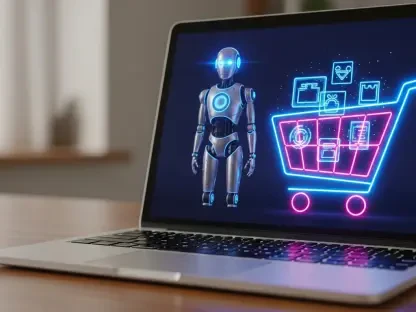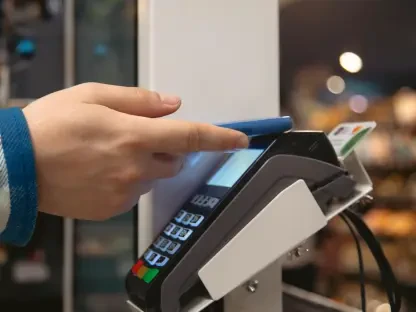As the retail landscape continues to rapidly evolve, customer expectations are shifting towards more connected and seamless shopping experiences that go beyond traditional brick-and-mortar stores. Mobile point-of-sale (mPOS) systems are at the forefront of this transformation, offering retailers a remarkable blend of mobility, flexibility, and efficiency. These systems have revolutionized the way retail associates operate, enabling them to provide enhanced customer service without being tethered to a checkout counter. Consequently, queues have become a thing of the past, checkout processes have sped up, and overall customer satisfaction has significantly improved.
The Core Components of mPOS Costs
Understanding the core components contributing to the overall cost of an mPOS system is essential for retailers evaluating their options. The first key component is POS hardware costs, which can vary significantly depending on the vendor and the specific devices required. Some vendors, like Shopify Tap to Pay, have innovative solutions that transform everyday smartphones into credit card readers, thus reducing hardware costs. Subscription fees for mPOS software typically range from $39 to $89 per month, with different tiers offering varied features. These fees can be a flat monthly rate or a percentage of each sale, depending on the vendor and the chosen plan.
Another crucial aspect is payment processing fees, which generally fall between 2.4% and 2.7% per transaction. These fees can vary depending on whether built-in or third-party payment processors are used. Each vendor offers its own subscription models and feature sets, which means it is vital for retailers to carefully evaluate what is included in these packages to ensure they meet their specific needs. By understanding these cost components, retailers can make informed decisions and select an mPOS system that aligns with their budget and operational requirements.
Integration and Unification
One of the most significant trends in mPOS systems is the integration and unification of front and back-end operations. Top mPOS solutions seamlessly unify operations across various sales channels, whether online or offline, resulting in a smarter and more efficient business. This unification not only promotes smarter data-driven decisions but also reduces the total cost of ownership. Retailers can access comprehensive data from different touchpoints, allowing them to make more informed decisions and optimize their business processes.
By integrating operations, mPOS systems can also streamline inventory management, customer data, and sales reporting. This holistic approach provides a seamless experience for customers and allows retailers to cater to their needs more effectively. As businesses grow and expand into multiple sales channels, having a unified mPOS system ensures consistent performance and management across all platforms. This trend towards integration and unification is set to dominate the market in the years to come, offering retailers a competitive edge in an increasingly interconnected world.
Personalized Customer Experience
Modern mPOS systems are not just about processing transactions; they are also designed to enhance the overall customer experience. With advanced inventory management capabilities, unified customer profiles, and personalized marketing efforts, retailers can cater to individual customer preferences and behaviors more effectively. Personalized experiences lead to increased customer loyalty and higher sales, as customers feel valued and understood by the retailer.
By leveraging customer data collected through mPOS systems, retailers can create targeted marketing campaigns, offer personalized promotions, and recommend products that are tailored to each customer’s preferences. This level of personalization fosters a deeper connection between the retailer and the customer, resulting in repeat business and positive word-of-mouth referrals. As customer expectations continue to evolve, the ability to provide a personalized shopping experience will become increasingly important for retailers looking to stay ahead of the competition.
Flexibility and Mobility
The evolution of mobile POS systems has led to increased flexibility and mobility, allowing retailers to serve customers wherever they are—be it in-store, at pop-up events, or online. This mobility boosts checkout speed and overall sales, as sales associates can complete transactions on the spot without requiring customers to wait in line. Retailers can take advantage of this flexibility to create unique and engaging shopping experiences that attract and retain customers.
For instance, retailers can set up pop-up stores at events, festivals, or other high-traffic locations without the need for extensive infrastructure. Similarly, sales associates can move freely within the store, assisting customers with their purchases and providing a personalized touch. This level of mobility not only enhances the customer experience but also allows retailers to maximize their sales opportunities by being present wherever their customers are. As the retail landscape continues to evolve, the ability to provide a flexible and mobile shopping experience will be a key differentiator for forward-thinking businesses.
Detailed Reporting and Analytics
Modern mPOS systems provide robust retail analytics, offering insights into every aspect of the business through customizable, pre-built reporting dashboards. These insights help retailers optimize their operations, identify trends, monitor performance, and make data-driven decisions that drive growth. Detailed reporting allows retailers to gain a deeper understanding of their business, from sales performance and inventory levels to customer behavior and employee productivity.
By analyzing this data, retailers can identify areas for improvement, allocate resources more effectively, and develop strategies to enhance their overall performance. For example, understanding peak sales times can help retailers optimize staffing levels, while analyzing customer preferences can inform product assortment decisions. The ability to access and interpret detailed analytics is a powerful tool for retailers looking to stay competitive in a data-driven world. As mPOS systems continue to advance, the depth and breadth of available analytics will only continue to grow, providing even greater value to businesses.
Shopify Tap to Pay
Shopify Tap to Pay stands out as a comprehensive POS system that allows sales from various locations, including retail stores, pop-ups, online, and social media. One of its most innovative features is its ability to transform smartphones into credit card readers, significantly reducing hardware costs and providing retailers with greater flexibility. With omnichannel commerce capabilities, advanced inventory management, and personalized customer profiles, Shopify Tap to Pay offers a robust solution for retailers of all sizes.
The system also includes built-in payment processing with Shopify Payments, which simplifies the checkout process and ensures seamless transactions. Additionally, Shopify Tap to Pay comes with extensive marketing tools and integration options within the Shopify App Store, allowing retailers to customize and enhance their POS system to meet their specific needs. This versatility and comprehensive feature set make Shopify Tap to Pay a top choice for retailers looking to streamline their operations and provide an exceptional customer experience.
eHopper
eHopper is another versatile mPOS system that is compatible with Android tablets and Windows PCs, offering its Poynt terminal to cater to diverse retail environments. This system includes features like table management for restaurants, online ordering, and native payment processing, making it suitable for a wide range of businesses. eHopper addresses the needs of various retail sectors, including grocery stores, restaurants, vape shops, salons, and liquor stores, by providing a tailored solution for each.
One of the standout features of eHopper is its ability to manage both front-end and back-end operations seamlessly. Retailers can handle inventory management, customer relationships, and sales reporting all within one unified system. This level of integration ensures that businesses can operate efficiently and provide a consistent experience for their customers. By catering to the unique needs of different retail sectors, eHopper offers a versatile and comprehensive mPOS solution that can adapt to the ever-changing retail landscape.
Square POS
Square POS is designed with small-to-medium-sized stores in mind, offering a range of features that cater to the needs of these businesses. One of the key advantages of Square POS is that it does not require a monthly subscription fee; instead, it takes a percentage of each transaction, making it a cost-effective option for retailers. Features such as appointment scheduling, a mobile app for iOS and Android, email receipts, and inventory reports make Square POS an ideal choice for industries like tattoo parlors, beauty salons, and homeware stores.
The system’s intuitive interface and ease of use make it accessible to retailers with varying levels of technical expertise. Square POS also offers robust customer support and a wealth of online resources to help retailers get the most out of their system. By providing a flexible and affordable solution, Square POS enables small-to-medium-sized businesses to compete in the rapidly evolving retail market without the need for significant upfront investment.
Clover Go
Clover Go is a mobile app that transforms smartphones into complete POS systems with a portable card reader, offering a high level of flexibility for retailers. This system includes features such as order management, returns support, tipping options, and service charges, making it suitable for a variety of sectors including restaurants, boutiques, jewelry stores, and health and wellness businesses. The ability to take payments on the go allows retailers to serve their customers wherever they are, providing a seamless and convenient shopping experience.
Clover Go’s user-friendly interface and robust feature set make it an attractive option for businesses looking to enhance their mobility and flexibility. The system also integrates with the broader Clover ecosystem, allowing retailers to scale their operations and access additional features as their business grows. By offering a portable and versatile mPOS solution, Clover Go empowers retailers to meet the evolving demands of their customers and stay competitive in a dynamic market.
PayPal Zettle
PayPal Zettle, part of the PayPal family, offers handheld devices and mobile card readers that accept major payment methods, providing a comprehensive mPOS solution for retailers. This system includes sales reporting, inventory alerts, and seamless integration with the PayPal ecosystem, making it an ideal choice for food and drink, electronics, and health and beauty stores. The ability to process various payment types and access valuable business insights makes PayPal Zettle a versatile and powerful tool for retailers.
One of the key benefits of PayPal Zettle is its ease of integration with existing PayPal accounts, allowing retailers to manage their finances and business operations within a single platform. Additionally, the system’s user-friendly interface and robust support resources make it accessible to retailers of all sizes. By offering a comprehensive and easy-to-use mPOS solution, PayPal Zettle helps businesses streamline their operations and provide exceptional service to their customers.
Toast Go
Primarily designed for the restaurant industry, Toast Go offers durable handheld POS devices with capabilities like mobile order and pay, inventory management, and table management. The system integrates seamlessly with food delivery platforms and restaurant management tools, making it an excellent choice for the food service industry. Toast Go’s robust feature set and durable hardware make it well-suited to the fast-paced and demanding environment of a restaurant.
The system’s ability to handle various aspects of restaurant operations, from taking orders to managing inventory, ensures that businesses can operate efficiently and provide a high level of service to their customers. Toast Go’s seamless integration with delivery platforms also allows restaurants to expand their reach and offer a convenient ordering experience for their customers. By providing a comprehensive and specialized mPOS solution, Toast Go helps restaurants streamline their operations and enhance their overall performance.
Lightspeed POS
Lightspeed POS is a retail management system designed to cater to a variety of industries, including retailers, golf courses, and restaurants. This system handles multi-store management, automatic discounts, and recurring payments, making it a versatile solution for businesses of all sizes. Target industries for Lightspeed POS include apparel, jewelry, pet stores, and toy shops, among others, highlighting its adaptability to different retail environments.
One of the key strengths of Lightspeed POS is its ability to manage complex retail operations across multiple locations. The system’s robust feature set, including detailed reporting and analytics, allows businesses to gain valuable insights into their performance and make data-driven decisions. By offering a versatile and comprehensive mPOS solution, Lightspeed POS empowers retailers to meet the diverse needs of their customers and stay competitive in an ever-changing market.
Choosing the Right mPOS System
As the retail landscape continues to undergo rapid changes, customers now expect shopping experiences that are more connected and seamless, extending beyond the boundaries of traditional brick-and-mortar stores. Leading this transformation are mobile point-of-sale (mPOS) systems, which offer retailers an extraordinary combination of mobility, flexibility, and efficiency.
These innovative systems have completely revolutionized how retail associates operate. No longer confined to a checkout counter, associates are now free to move throughout the store, providing enhanced customer service and support wherever it’s needed. This mobility allows for faster checkout processes, effectively eliminating long queues and significantly improving overall customer satisfaction.
Moreover, mPOS systems facilitate better inventory management, real-time sales data, and personalized shopping experiences, meeting the evolving needs of modern consumers. The ability to accept payments anywhere in the store not only streamlines operations but also empowers sales associates to create a more engaging and efficient shopping environment.
By adopting mPOS technology, retailers are able to stay competitive in a market that increasingly values convenience and personalized experiences. In a world where customer expectations are constantly on the rise, mPOS systems represent a crucial step forward, ensuring that shopping is not just a transaction, but a pleasant and efficient experience from start to finish.









